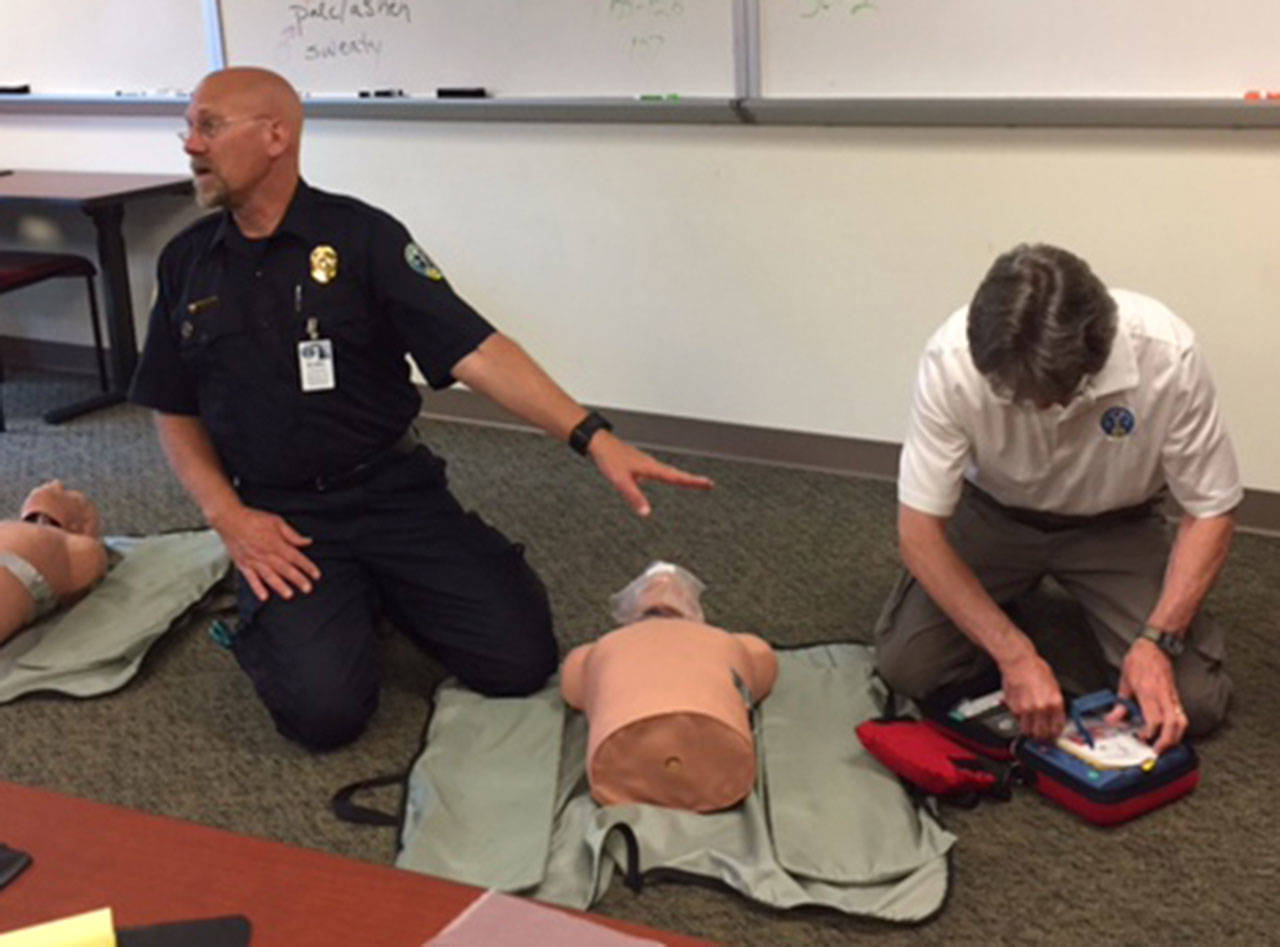Submitted by the SJI EMS
Cape San Juan is a community located at the south end of San Juan Island. It is about 10 miles from Friday Harbor and a 20-minute drive. Even then, most residents know that travel time can vary greatly depending on an active summer season. When 911 is paged, the response time can be cut down, but 10 miles of curving tourist-laden roads can affect the success of the chain of survival for cardiopulmonary resuscitation. There is a narrow, five- to 10-minute window before irreversible brain damage and other negative effects can an occur to an oxygen-starved brain and body.
The chain of survival is composed of four key points: Early access (calling for help), early CPR (bystanders), early defibrillation (access to an AED) and early advanced life support (emergency medical services).
The cape is fortunate enough to have, living amongst their ranks and surrounding neighborhood, two volunteer EMTs, two retired EMTs, a nurse, and a retired nurse. Francis Smith, a senior EMT volunteer for 12 years and a former firefighter, has taken the initiative to give his friends and neighbors a fighting chance if a cardiac event should occur in his community. This spring, he gathered 32 individuals from the Cape and Cattle Point neighborhoods to attend a CPR certification class.
“My goal was to get 12 and I was astounded to get 32,” a smiling Francis said. “We call ourselves the ‘Southenders.’”
Training didn’t stop at that initial CPR class. The group tries to gather once a month to cover scenarios, ask questions and become “desensitized” to being the first person on scene to an emergency. These scenarios vary from moving a heavy patient off a bed or recliner to the floor for compressions, to entering someone’s home at 2 a.m.. The goal is for the first responder to focus on the skills needed and not be bashful.
The Cape Association is considering purchasing a community AED that will be located at the fire station/clubhouse and two additional personal units have been purchased by residents.
The next goal for Francis and the “Southenders” is to determine the best way to alert available team members should a cardiac incident occur. The team is still working this issue and welcomes input.
It takes an immense amount of time and energy to gather people together, especially with busy summer schedules. San Juan Island EMS would like to congratulate Smith and the “Southenders” for dedicating the time to preparedness and being proactive about the health and safety of each other and families.



